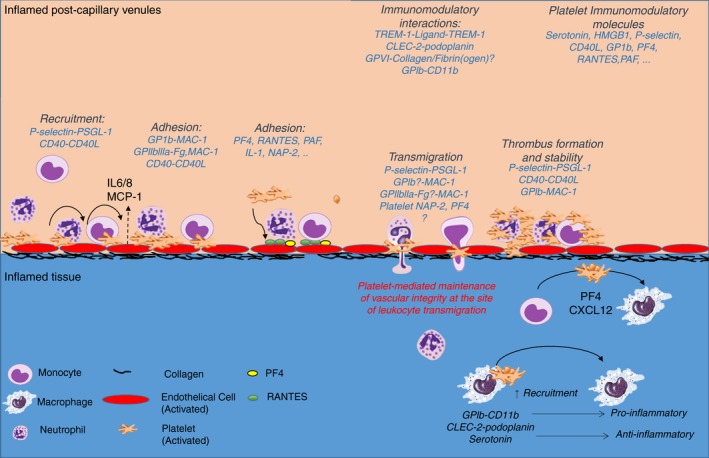Figure 1.

Platelets promote leukocyte recruitment, adhesion, and transmigration at the site of inflammation while maintaining vascular integrity. Under inflammatory challenge, platelets are the first cellular blood component adhering on the inflamed endothelium in small postcapillary venules. Adherent platelets recruit neutrophils and guide them in their adhesion and transmigration through cell‐cell interactions or release of chemokines on the endothelium. Activated platelets and neutrophils cooperate to recruit inflammatory monocytes with specific inflammatory stimuli such as MCP‐1 secretion required for efficient monocyte recruitment. At the site of leukocyte transmigration, platelets secure endothelial cell integrity to limit inflammatory bleeding. During inflammation, platelets promote the differentiation of monocytes into macrophages. Platelet receptors or releasate can shift macrophages towards a pro‐ or anti‐inflammatory phenotype. CLEC‐2, C‐type lectin‐like receptor‐2; GPVI, glycoprotein VI; IL‐1, interleukin‐1; GPIb, glycoprotein Ib; HMGB‐1, high‐mobility group box 1; MAC‐1, macrophage 1 antigen; NAP‐2, neutrophil activating peptide 2; PAF, platelet‐activating factor; PF4, platelet factor 4; PSGL‐1, P‐selectin glycoprotein ligand‐1; ; TREM‐1, triggering receptor‐expressed myeloid cells 1
